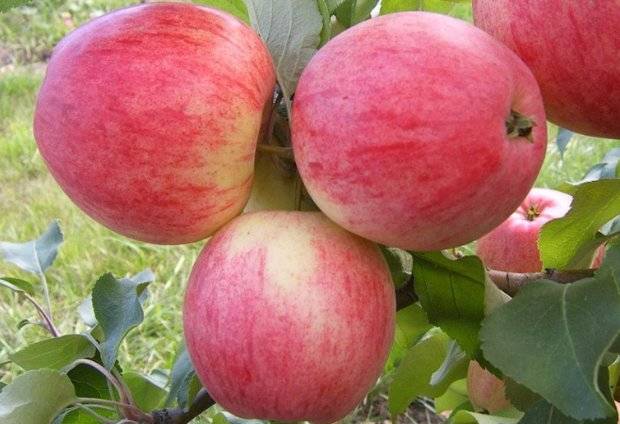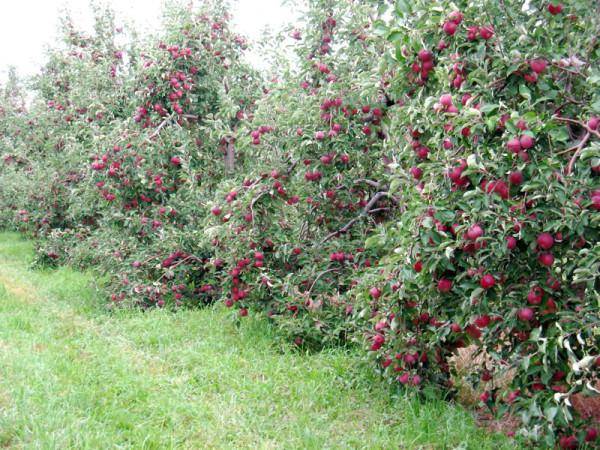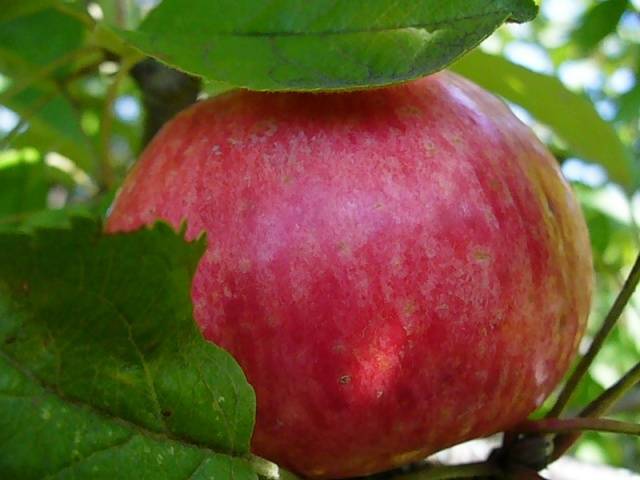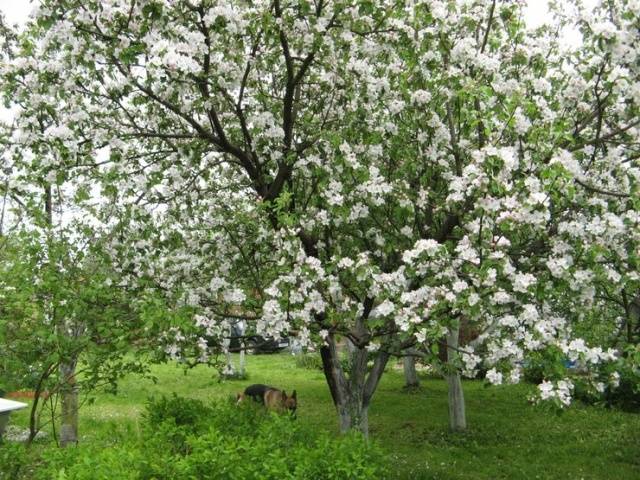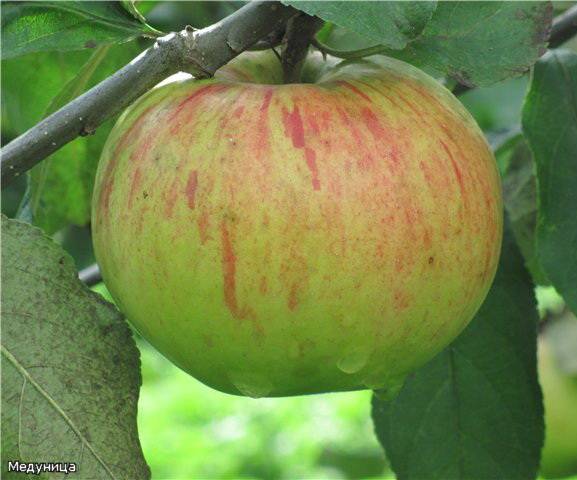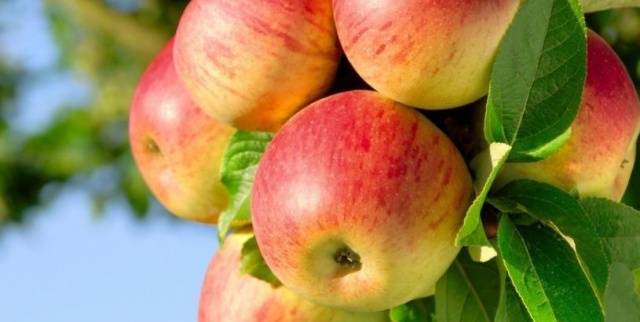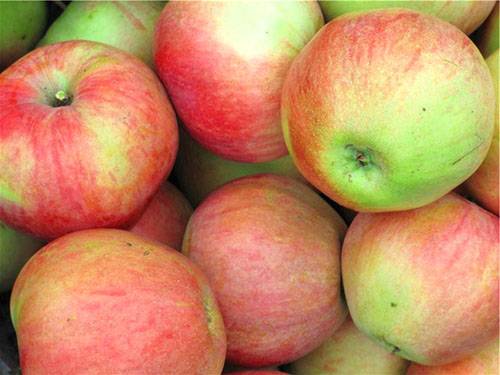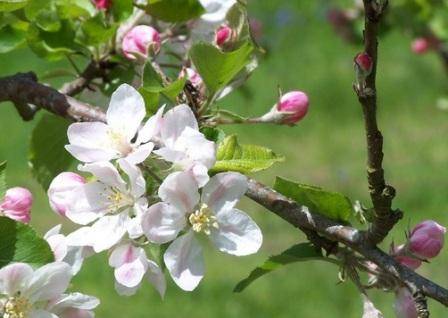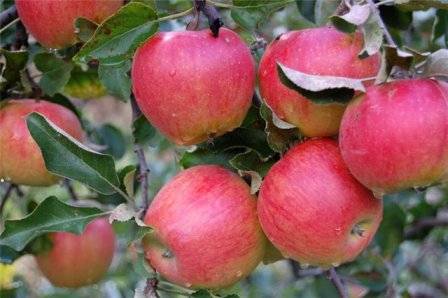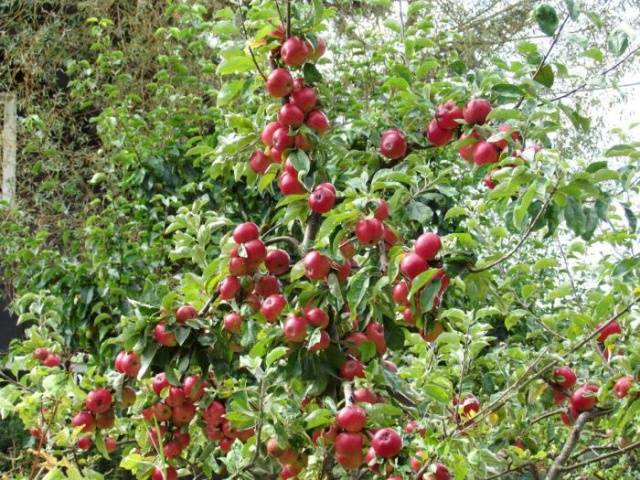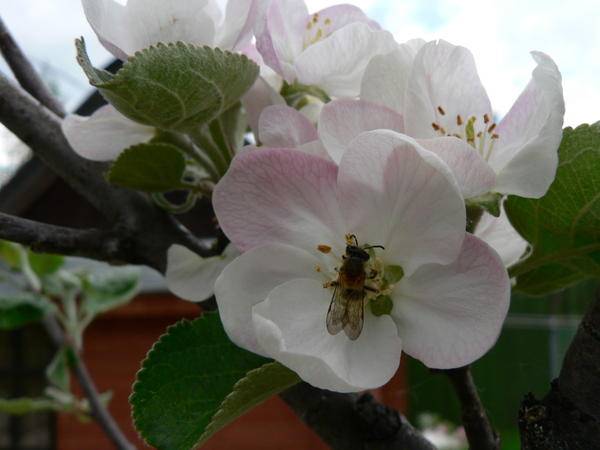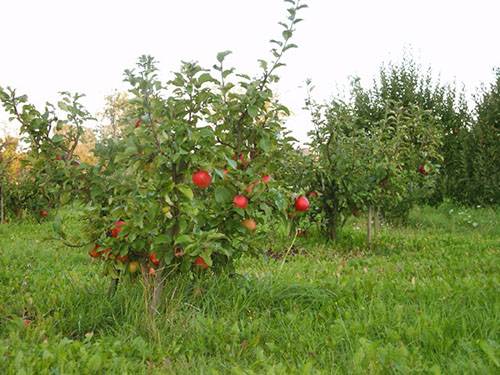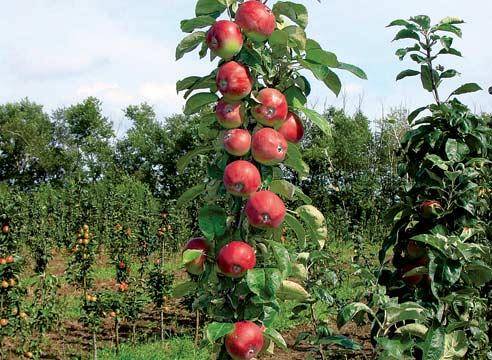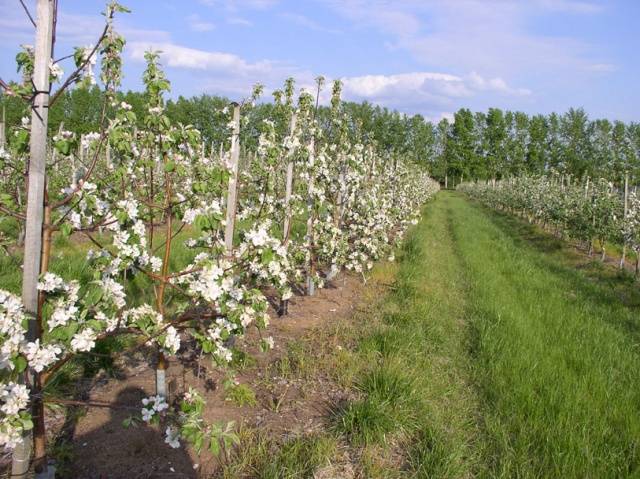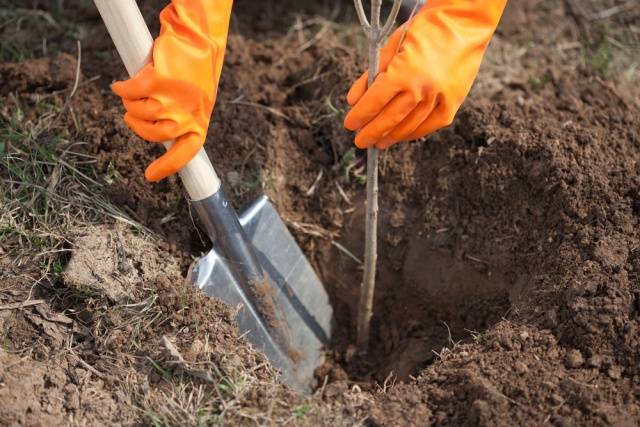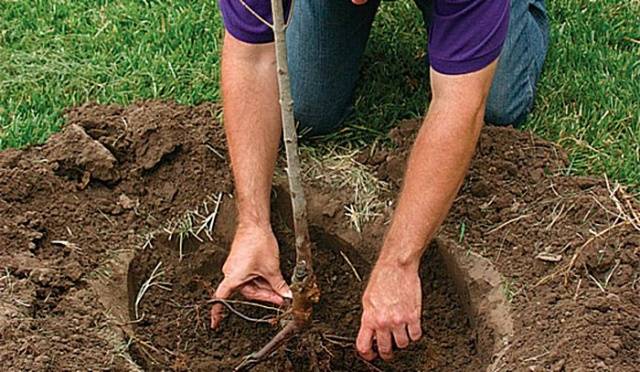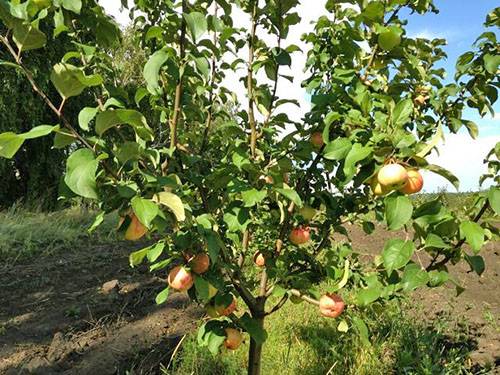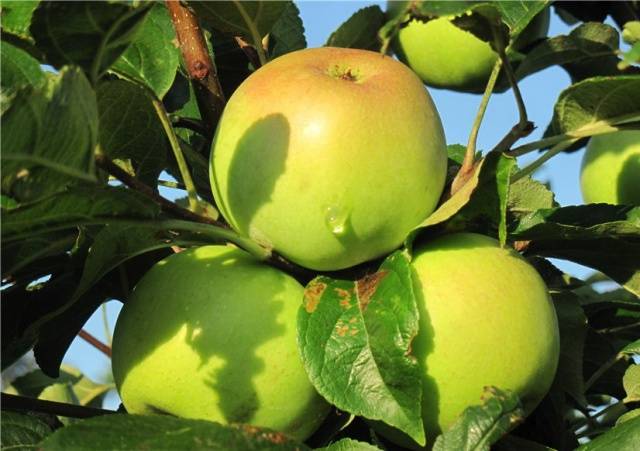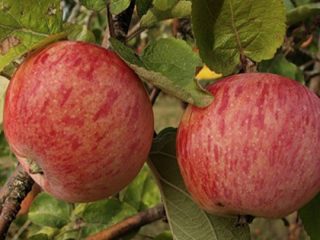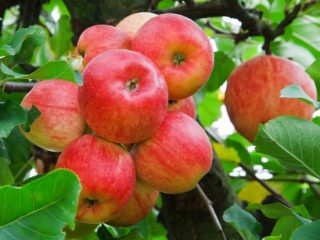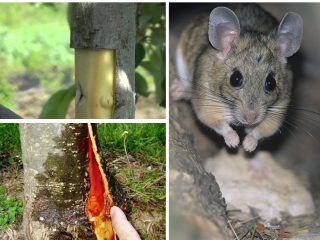Content
The variety of apple varieties amazes even seasoned gardeners. And each of them differs not only in the taste of the fruit, but also in such indicators as winter hardiness, resistance to fungal diseases, frequency and abundance of fruiting, long shelf life and others. Therefore, each owner of a personal plot chooses the best varieties for his garden in the hope of getting a bountiful harvest of aromatic apples. And when choosing, great attention is paid to such qualities as the speed of fruit ripening, their excellent taste and aroma. It is desirable that the selected variety combines as many positive qualities as possible. Almost all the positive characteristics described above are possessed by the Medunitsa apple tree.
This variety has deservedly enjoyed great popularity among gardeners for more than half a century. Bred in the 30s of the last century, the Medunitsa apple tree still gives abundant harvests in garden plots and in the southernmost regions of Russia, Siberia, and the Urals. The distribution area of Medunitsa is so wide that it is difficult to believe in its ability to adapt to new conditions so quickly. In this article, you will learn everything about the unique and at the same time unpretentious Medunitsa apple tree, a description of the variety, photos, reviews, planting and growing rules, as well as some features in care, on which the duration and quality of fruiting depends.
Breeding history of Medunitsa
Isaev S.I. began breeding work on the development of a new variety, the distinctive feature of which should be frost resistance, in the early 30s of the last century. Thanks to his activities, the catalog of varietal fruit trees has been replenished with more than 40 different varieties that differ not only in winter hardiness, but also in resistance to various fungal diseases. The apple cultivar Medunitsa was bred by crossing the Canadian cultivar Welsey and the Cinnamon striped cultivar.
But this apple tree received the name "Medunitsa" not for the aroma and taste of honey, which its fruits possess. Rather, the breeder gave this name to the apple tree in honor of the flower of the same name, which is among the first to bloom in the spring. In addition, the biologist called his beloved wife "Medunitsya". The apple tree has several other names - "Medovitsa", "Medovka".
For excellent breeding activity and excellent qualities of the Medunitsa apple tree, the professor was awarded the Stalin Prize. But, despite all the merits and the huge work done, Medunitsa and many other varieties bred by him were never registered in the State Register.
Description of the variety
Description of the apple tree variety Lungwort, as well as his photos and reviews, will allow you to make the first impression about this fruit tree, its external characteristics and distinctive qualities, the taste of the fruit and understand why gardeners love it so much.
Characteristics of trees
In appearance, height and spreading of the crown, Medunitsa is more likely to be referred to as tall varieties.Indeed, on a seed stock, an apple tree grows more than 7 meters in height. The skeleton of the crown of an adult tree is sparse and close to a pyramidal shape. The apple tree has a fairly wide, well leafy crown.
The lungwort is characterized by excellent sprouting ability, which, coupled with high growth, requires a special approach to the rules and timing of annual pruning of branches for crown formation and abundant fruiting.
The shade of the crown is predominantly light green. The shoots are light brown in color. The foliage has a rounded, slightly oblong shape with a light yellow tint. In the middle, the leaf plates are slightly curved.
Fruit characteristics
The fruits of the Medunitsa apple tree are of medium size. The mass of apples varies between 100-150 grams. Larger fruits are extremely rare. The shape of the apples is predominantly round. Occasionally they can have a narrowed, conical shape.
Ripe fruits are yellow-green in color with bright orange-red flashes. In the full ripening phase, the apples of Lungitsa have a bright red or yellow color with a bright scarlet blush. At any stage of maturity, red flashes are clearly visible.
In terms of taste, the Medunitsa apple tree is classified as a sweet summer variety. The content of natural sugars in fruits is not less than 14%, and often exceeds this indicator. Low acidity. For this reason, apples, even unripe, can be eaten.
Tasting assessment of the taste of fruits at full maturity - 4.3-4.6 points on a 5-point system. Apples are juicy. The pulp is firm. The fruits have a light aroma and honey flavor.
Advantages and disadvantages
The uniqueness of the apple variety Medunitsa Summer is its ability to grow in cold regions with a harsh climate and retain all of the above qualities. Traditional apple varieties are characterized by high acidity.
Benefits of the apple tree Medunitsa
- High frost resistance;
- High resistance to fungal diseases, in particular to scab and rot;
- Sweet fruit taste;
- High survival rate of seedlings;
- Unpretentious care;
- Early and abundant fruiting;
- Ripe fruits hang on the branches for a long time;
- Self-pollinating variety;
- Early ripening.
Despite the many advantages, the Medunitsa apple tree has and disadvantages:
- Very short shelf life of the crop;
- Changes in the taste and aroma of apples during storage;
- Mature apple trees need to be pruned regularly for a bountiful harvest.
Fruiting of Lungwort
Saplings of the apple-tree of Lungitsa, grafted on a seed stock, begin to bear fruit in 5-6 years. The ability to bear fruit has been maintained for over 50 years. But the peak occurs in the first 12-15 years of fruiting. Subsequently, the yield depends on timely care and timely pruning of branches for the formation of the apple tree crown.
Harvesting of the fruits of the Summer Medunitsa begins in mid-August - early September. Apples ripen unevenly due to the strong foliage of the trees. Fruits sometimes lack sunlight for full ripening.
Lungwort flowering and suitable pollinating varieties
The apple tree Lungwort is self-pollinating. But to improve the yield and quality of fruits, gardeners recommend choosing suitable "neighbors" for it. When choosing suitable companions, special attention should be paid to the timing of flowering trees. The lungwort gains color in late May - mid June. Therefore, neighbors must be chosen with an identical flowering period.
The following varieties will be good pollinators for the Medunitsa apple tree:
- Victory;
- Anis Sverdlovsky;
- Cinnamon striped.
Harvesting and storage
You can pick the apples of Lungwort both unripe and in the full ripening phase. The storage of apples depends on the degree of ripeness. Unripe fruits can be stored for 3-4 months. It is not recommended to store ripe apples for more than a month.
A feature of the fruits of this variety is the change over time in the taste and aroma of apples, which are perfectly preserved for no more than two to three weeks.
The fruits of Medunitsa are not subject to long-term storage. But sweet and aromatic apples are often used by gardeners to prepare apple compotes, jams, preserves and other preparations for the winter.
Winter hardiness of the apple tree Medunitsa
Frost resistance is an important quality when choosing a suitable apple variety. Due to the excellent indicators of high frost resistance, Medunitsa received well-deserved recognition not only among owners of household plots, but also in horticulture, in growing apples on an industrial scale.
Apple trees tolerate low temperatures well. Frosts in -35˚C –40˚C are not terrible for Medunitsa. Therefore, this variety has become so widespread. Apple trees rarely suffer from severe winter frosts and perfectly tolerate spring frosts.
Disease resistance
Scab is the most common disease of fruit trees. The urgency of this problem in horticulture was also acute during the breeding years of Medunitsa. It has not lost its sharpness at the present time.
During the breeding work, Isaev paid special attention to the resistance of apple trees to fungal diseases. And he managed to achieve the task - Medunitsa has a strong immunity to scab.
However, it should be borne in mind that new strains of diseases have appeared over such a long period. Unfortunately, this variety does not have immunity to them. Therefore, annual prophylaxis against fungal diseases of apple trees is necessary.
What rootstocks should be grown on
At the time of purchasing the seedlings of the apple-tree of Medunitsa, you need to pay great attention to which rootstock the plant is grafted on. It depends on it:
- Tree height;
- Apple tree appearance and size;
- Ripening period and fruiting period;
- Apple tree planting scheme;
- Duration and frequency of fruiting;
- Life span of fruit trees.
Seed stock
Lungwort, grown on a seed stock, requires careful maintenance and annual pruning to form the crown.
Description and characteristics of the apple tree Medunitsa on a seed stock:
- With proper care, the apple tree bears fruit for 45-50 years;
- The height of an adult apple tree is 5-7 meters;
- Fruiting period begins at 5-6 years;
- The minimum distance between seedlings is 4.5-5 meters. The crown of apple trees is very wide.
Semi-dwarf rootstock
Gardeners recommend purchasing tall varieties, in particular Medunitsa, on a semi-dwarf rootstock. It is easier for such seedlings to provide proper care and to harvest a bountiful harvest without hindrance. Unlike ordinary apple trees, the height of an adult tree will be lower, fruiting begins much earlier.
Characteristics of the semi-dwarf Medunitsa:
- Height of an adult tree is 4-4.5 m
- The apple tree begins to bear fruit in 3-4 years.
- The distance between the seedlings is 3 m.
- It can grow with a close occurrence of groundwater.
Columnar and dwarf rootstocks
The convenience and advantages of miniature varieties are undeniable. If the usual Lungwort has a pyramidal shape, then undersized apple trees can have a triangular or spherical shape. Like all representatives of this variety, she needs regular crown formation for abundant fruiting.
Characteristics of the apple tree Medunitsa grown on dwarf rootstock:
- The height of the apple tree is 1.5-2 m;
- The onset of fruiting in 2.5-3.5 years;
- The minimum distance between seedlings is at least 1 m.
Features of apple trees on a columnar rootstock:
- Early fruiting. The dwarf Medunitsa begins to bear fruit even in the second year. But for the full development of a young seedling in the first 1.5-2 years, experienced gardeners recommend breaking the ovaries.
- Due to the small size of the apple trees, they require garters and special care.
- Columnar apple trees bred for the purpose of abundant fruiting. Therefore, their life span is very short. Columnar Medunitsy bear fruit no more than 10-12 years.
Do not forget that the root system of all dwarf varieties is the most vulnerable point. It is not so highly branched and is located too close to the surface of the earth. Therefore, too strong, gusty winds are detrimental to all miniature trees.
Features of planting apple trees
Considering that an apple tree can grow in one place for up to 50 years, the choice of a suitable site must be approached with special care. It is very important to comply with the following conditions:
- The place for planting apple trees should be sufficiently lit and protected from piercing winds.
- Summer lungwort should not be planted in an area with a close occurrence of groundwater. She does not like waterlogging. The only exception is the apple tree, grown on semi-dwarf rootstock.
- When determining the optimal distances between seedlings, you should strictly adhere to the recommendations of gardeners. So, for the summer Medunitsa, the minimum distance is 4.5-5 m, for the half-cricket - 3-3.5 m, for the dwarf - 1-1.5 m. This is due to the peculiarities of the root system and the size of the crown of apple trees of different varieties.
- The width and depth of the planting pit directly depends on the composition of the soil. Provided that the soil is loose and fertile, the size of the planting pit is 40 cm X 35 cm.On heavy, dense soil, you will have to dig a larger hole: 1 m X 70 cm.
You can plant apple seedlings both in spring and autumn. In the spring, planting dates are limited. So that young trees can calmly adapt and take root in a new place.
In autumn, in the central part of Russia and in the southern regions, it is advisable to plant Medunitsa seedlings in October. In areas with a harsh climate, planting work should be completed in late September - early October.
If the soil on your site is not fertile, then during planting, you can add humus (1.5-2 buckets), superphosphate or potassium-phosphorus fertilizers (300-400 g), potassium sulfate (no more than 80-100 g) to the soil ... Mix everything thoroughly with ordinary garden soil.
When planting, note that the roots of the seedlings should be free in the hole. The roots should not be allowed to bend.
Before landing, drive a wooden stick or peg about 2-2.5 meters high into the center of the landing pit. Subsequently, a young tree will need to be tied to it. This will help the seedlings to survive the bad weather in the first 1.5-2 years, withstand strong winds, and reduce the likelihood of damage to the branches.
Make sure that after planting the root collar is 4-5 cm above the soil level. Place the seedling in the planting hole. It is very convenient to plant young apple trees together. Fill the hole with the prepared soil mixture. Pack the soil well and water the Medunitsa abundantly. After planting, at least 5-6 buckets of water must be poured under each seedling.
For the first 2-3 years, there will be enough fertilizer in the soil for the apple tree. And after this period, the trees will need to be fed annually: in the spring - with nitrogen-based fertilizers, in the fall - with phosphorus-potassium fertilizers.
Winter apple variety
For more than half a century, thanks to the work of breeders, many variations have been created based on Medunitsa.The purpose of the breeding work was to improve the frost resistance of trees and increase the shelf life of fruits. The result of many years of research was the winter Medunitsa apple tree.
Description of winter medunitsa, photos, reviews:
- Apples ripen a month later - at the end of September;
- Fruits are stored until spring;
- In the winter version of Medunitsa, the acid content in the fruits is much higher than in the summer one. Therefore, winter apples are not so sweet during ripening;
- The rules for planting and subsequent care for the winter Medunitsa practically do not differ from the recommendations for caring for the summer variety.
When planting a winter apple tree, take into account the flowering time and plant good pollinators nearby. The flowering period of both must coincide.
The author of the video will tell you about the features of the Medunitsa apple tree and its fruits
Conclusion
The apple tree Medunitsa is still very popular among amateur gardeners due to such excellent qualities as frost resistance, resistant immunity to fungal diseases, early ripening, and abundant fruiting. Delicate, honey aroma and sweet taste of the fruit have come to the liking of many gourmets and lovers of eating apples straight from the tree. Culinary experts note that the most aromatic and delicious desserts are obtained from apples of this variety. Not every variety receives such recognition and love of gardeners as Medunitsa deserves.
